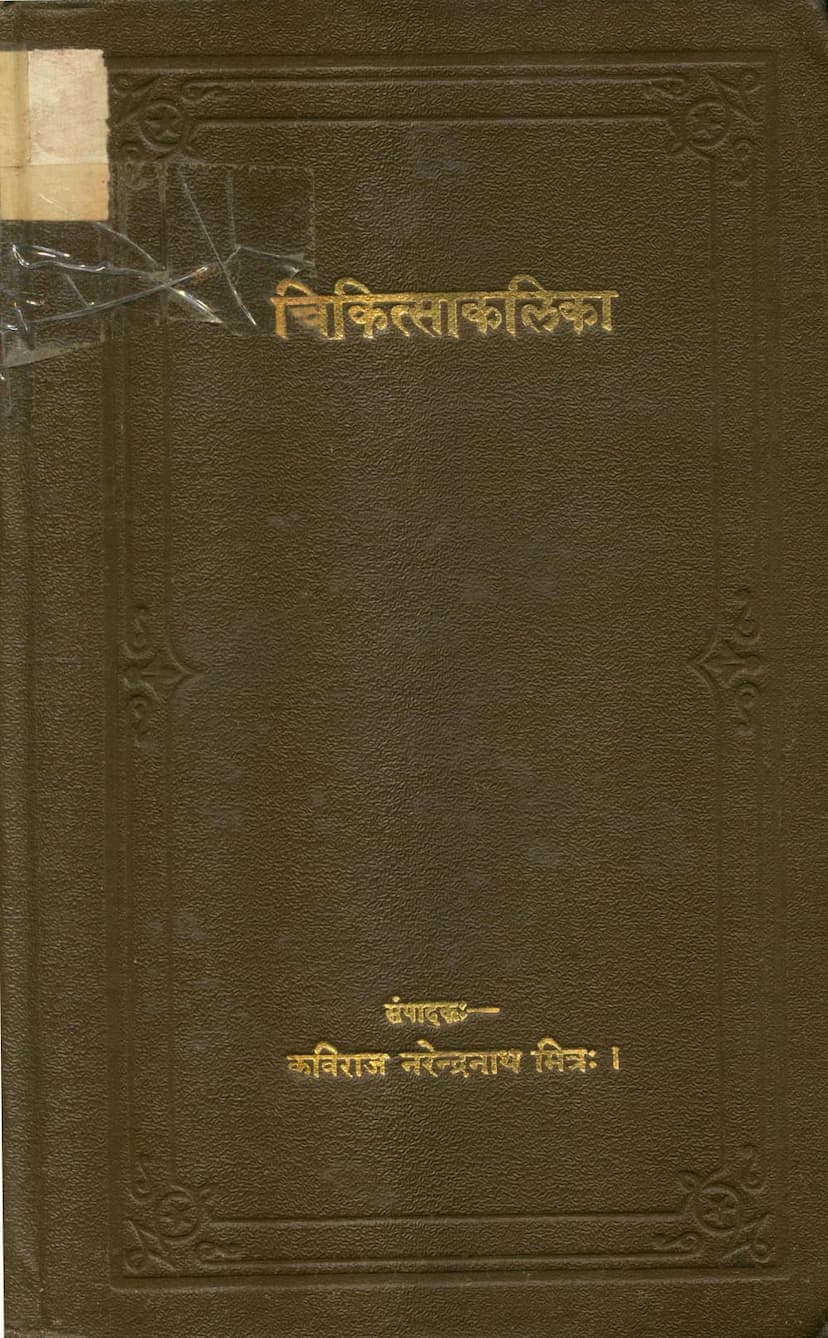Chikitsa Kalika
Added to library: September 1, 2025

Summary
Here's a comprehensive summary of the Jain text "Chikitsa Kalika" based on the provided pages:
Book Title: Chikitsa Kalika (चिकित्साकलिका) Author: Tisatacharya (तीसटाचार्य) Commentary: Chandrata (चन्द्रटाचार्य) Editor/Reviser: Kaviraj Narendra Nath Mitra (कविराज नरेन्द्रनाथ मित्र) Hindi Translator: Jayadeva Vidyalankara (जयदेव विद्यालंकार) Publisher: Mitra Ayurvedic Pharmacy, Lahore Publication Year: 1983 Vikram Samvat (which corresponds to 1926 CE, though the Hindi title page mentions Lahore, which might be a later edition or re-publication.)
Overall Theme:
"Chikitsa Kalika" (literally meaning "Flower of Treatment" or "Essence of Treatment") is presented as a valuable ancient Ayurvedic text focused on essential aspects of medical treatment. The text emphasizes the importance of understanding the fundamental principles of Ayurveda and providing practical guidance for physicians.
Key Highlights and Content Summary:
- Purpose: The text aims to provide essential knowledge for Ayurvedic practitioners, making the profound secrets of Ayurveda accessible even to those with less extensive textual study. It bridges the gap between complex ancient medical knowledge and the needs of modern practitioners.
- Authorship and Lineage: The original work is attributed to Tisatacharya. His son, Chandrata, provided an extensive and clear Sanskrit commentary, further enriching the text. Kaviraj Narendra Nath Mitra undertook the significant task of editing and revising the text, making it accessible, and it was further enhanced by a Hindi commentary by Ayurveda-charya Jayadeva Vidyalankara.
- Ayurvedic Principles: The introduction emphasizes the paramount importance of health for achieving the four aims of human life (Dharma, Artha, Kama, Moksha). It highlights that Ayurveda, when properly understood and applied, is a potent science, with its knowledge being as crucial as poison or fire if misunderstood, and as beneficial as nectar if understood correctly.
- Structure and Content: The extensive table of contents (विषयानुक्रमणिका) reveals a comprehensive coverage of Ayurvedic medicine. It starts with introductory sections like Mangalacharan (auspicious invocation), introduction to Chikitsa Kalika, its utility, and descriptions of curable (Sadhya), manageable (Yapya), and incurable (Asadhya) diseases.
- Core Concepts Covered:
- Doshas (Vata, Pitta, Kapha): Detailed explanations of the nature, causes of vitiation, and symptoms of derangements of the three doshas.
- Body Constitution and Diagnosis: Emphasis on examining the patient's strength (Bala), time (Kala), disease manifestation (Vikara), constitution (Prakriti), and suitability of treatments and time (Atura Pariksha, Bala Pariksha, Kala Pariksha, Prakriti Pariksha).
- Pharmacology and Pharmacy: Extensive discussion on medicinal preparations like oils (Taila), ghees (Ghrita), decoctions (Kwatha), powders (Churna), etc. It details the usage of various medicinal herbs and formulations.
- Branches of Ayurveda: The text covers various branches of Ayurveda, including Kayachikitsa (internal medicine), Shalakya Tantra (diseases of supra-clavicular region, including eyes, ears, nose, throat), Shalya Tantra (surgery), Agada Tantra (toxicology), Karma Tantra (dealing with poisons), Rasayana Tantra (rejuvenation), Vājīkaraṇa Tantra (aphrodisiacs), and Bhuta Vidya (dealing with psychic disorders and demonic influences).
- Specific Treatments: The table of contents lists specific treatments for a wide array of diseases, including fevers (Jvara), diarrhea (Atisara), digestive disorders (Grahani), hemorrhoids (Arsha), fistulas (Bhagandara), swellings (Shvayathu), abdominal disorders (Udara), tumors (Gulma), abscesses (Vidradhi), etc., covering treatments from simple home remedies to complex surgical procedures.
- Emphasis on Practicality: The editor, Kaviraj Narendra Nath Mitra, highlights that the text is composed in simple, delightful verses, making it easy for even less experienced physicians to grasp the intricacies of Ayurveda. The inclusion of both Sanskrit original and Hindi commentary aims to ensure clarity and accessibility.
- Inclusion of Classical References: The text frequently references ancient Ayurvedic authorities such as Charaka, Sushruta, Harita, Bhela, and others, demonstrating a strong grounding in classical Ayurvedic principles.
- Importance of Diagnosis: The introductory sections stress the critical need for thorough patient examination and understanding of the root cause, doshic imbalance, strength, time, disease type, and suitability of treatments before administering any medicine.
Significance:
The "Chikitsa Kalika" serves as a foundational text for understanding essential Ayurvedic treatments. Its meticulous compilation, editorial rigor, and bilingual commentary make it a significant contribution to making classical Ayurvedic knowledge readily available and applicable for practitioners and students alike. The comprehensive nature of its contents, from basic principles to detailed treatments for numerous ailments across various branches of Ayurveda, underscores its value as a comprehensive guide to essential medical practice.